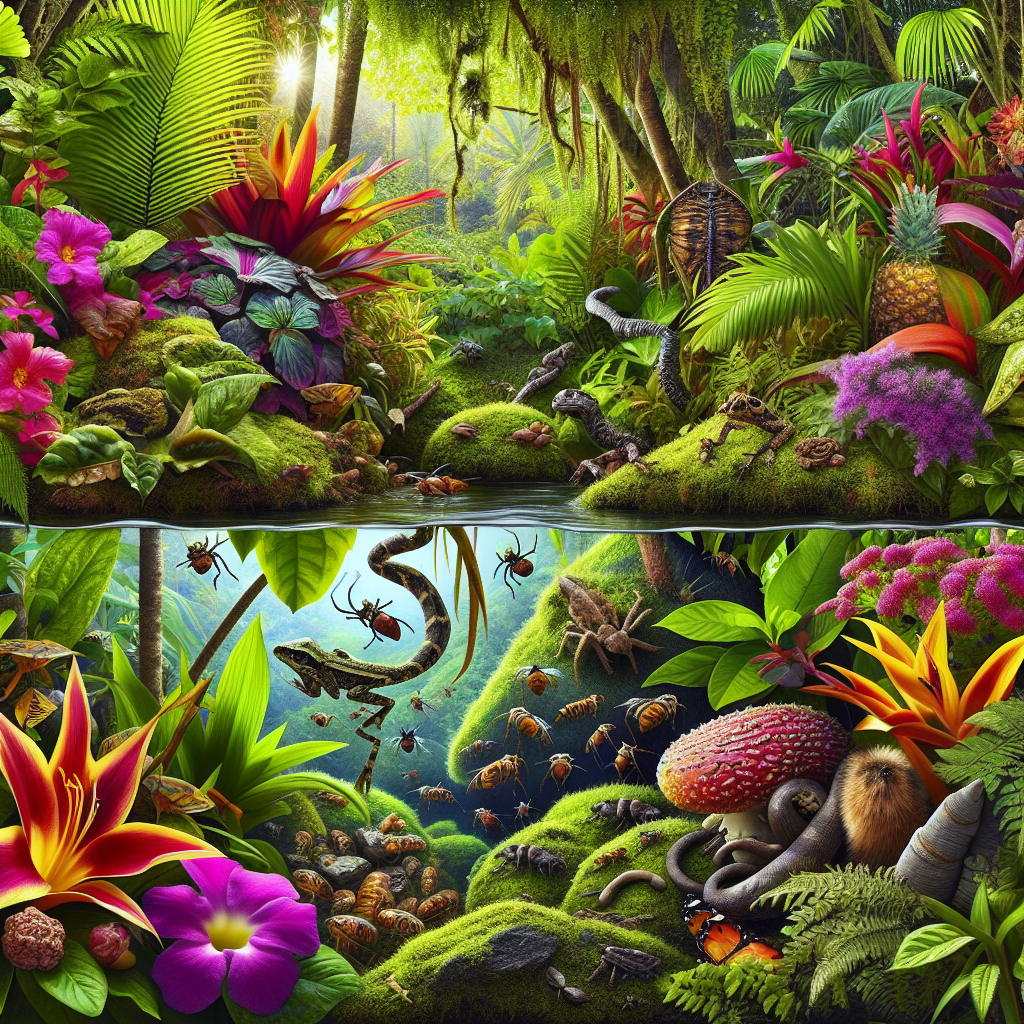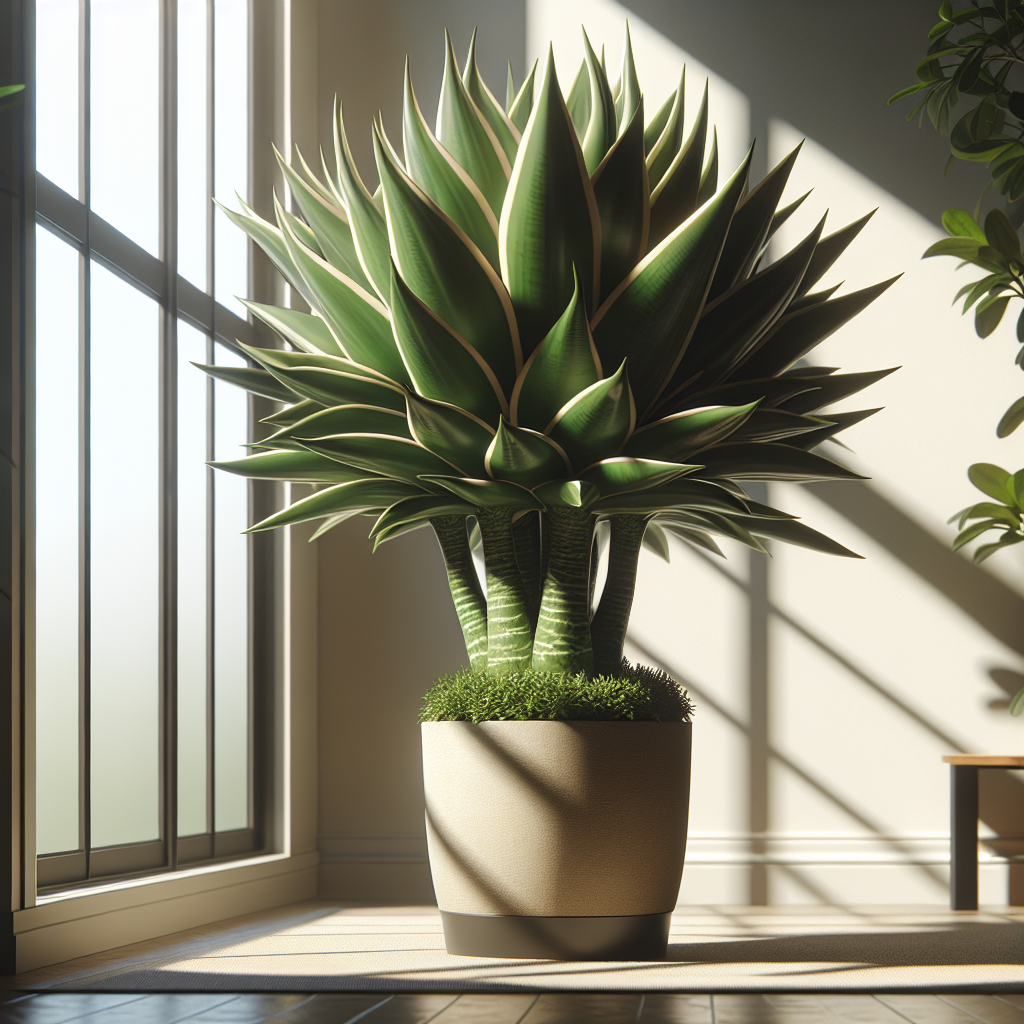Hawaii’s Hidden Garden Dangers: What to Know
Updated May 18, 2024 at 7:59 am

Understanding Hawaii’s Unique Flora
When you think of Hawaii, you might envision lush landscapes and exotic plants – a true paradise. However, amidst this tropical beauty, there are hidden garden dangers unique to the Hawaiian Islands that every enthusiast should be aware of. Before diving into Hawaii’s horticultural treasures, it’s vital to understand the native and invasive species you may encounter.
Native Plants and Their Care Basics
Let’s explore some of Hawaiis native plants and the essential care they require. Before we do that, let’s overview what you should keep in mind for each of these botanical wonders:
- Pet Friendly: Always verify if a plant is safe for your pets. Some Hawaiian species can be toxic if ingested.
- Light Requirements: Understanding the light needs of each plant will ensure they thrive and avoid potential issues caused by too much or too little sun exposure.
- Watering: Overwatering can be as dangerous as under watering, especially with tropical plants that are used to specific humidity levels.
- Humidity: Humidity affects plant health significantly. Hawaiian plants are adapted to a humid environment which might need to be simulated if grown elsewhere.
- Temperature: These plants often prefer warmer climates and might not withstand colder temperatures without proper precautions.
- Difficulty: Some Hawaiian plants are more demanding than others, and understanding their care difficulty is key to successful gardening.
Recognizing and Managing Plant Disease
Garden enthusiasts should keep a watchful eye for signs of plant diseases, which can spread rapidly in Hawaii’s humid climate. Spotting brown or yellow leaves or unusual spots could signal an issue that needs immediate attention.
To manage these issues, consider using products like neem oil or organic fungicides. One popular choice is Garden Safe Brand Fungicide3, which acts as an insecticide, fungicide, and miticide. It’s known for protecting plants without introducing harsh chemicals into your garden ecosystem.
Pros:
- Organic solution applicable up to the day of harvest
- Three-in-one product for convenience
Cons:
- May require multiple applications for severe infestations or infections
- Not effective against all types of pests or fungi
Find This and More on Amazon
Invasive Species and Their Impact on Hawaiian Gardens
Hawaii’s ecosystem is sensitive, and invasive plants can pose a significant threat to local biodiversity. Invasive species can outcompete native Hawaiian plants for resources, leading to a decline in indigenous populations.
It’s important to identify and control these invaders. The notorious Miconia calvescens, for example, can overshadow understorey plants with its large leaves. Another pervasive troublemaker is the Clerodendrum quadriloculare, also known as the “Shooting Star,” which can rapidly take over garden spaces.
Controlling Invasive Plants
Managing these invasive species is a tough job but necessary for preserving Hawaii’s natural flora. Mechanical methods, such as hand-pulling young plants or cutting larger ones, are often the first line of defense. For more stubborn cases, a herbicide like Ranger Pro Glyphosate Herbicide is used by professionals.
Consider using Ranger Pro Glyphosate Herbicide, known for its efficacy. But heed the caution to use it carefully to avoid impacting non-target plants and wildlife.
Pros:
- Highly effective against a broad range of invasive species
- Economical due to high concentration
Cons:
- Potential to harm non-target species if not applied carefully
- Environmental and health concerns with improper usage
Find This and More on Amazon
Wildlife and Plants: Balancing Beauty with Safety
The natural beauty of Hawaiian gardens often attracts various wildlife, some of which can be harmful to your plants, pets, or even yourself. For instance, the Hawaiian cane spider can be startling due to its size, though it’s generally harmless to humans.
In contrast, the Little Fire Ant (Wasmannia auropunctata), an invasive species, can pose a real danger. These ants can inflict painful stings and are harmful to endemic species.
Keeping the Wildlife in Check
For issues like the Little Fire Ant, bait-based insecticides can be an effective control method. A product such as Amdro Ant Bait, specifically designed to combat invasive ants, can be an ally in your garden’s defense.
The ease of use and effectiveness of Amdro Ant Bait makes it a go-to solution, yet always remember to keep such treatments out of reach of pets and to follow label instructions precisely.
Pros:
- Targets the queen ant to effectively reduce populations
- Granular form is easy to apply around garden perimeters
Cons:
- Must be kept away from pets and children
- Regular reapplication may be necessary for heavy infestations
Essential Tools for Hawaiian Gardening
Having the right tools can make all the difference when dealing with a garden in Hawaii. Quality pruning shears are indispensable for keeping plants healthy and managing overgrowth.
Felco F2 Pruners are widely recommended by horticulture experts for their durability and precision. They can help you maintain your garden’s aesthetics while also controlling unwanted growth and removing diseased foliage.
Pros:
- Ergonomically designed for comfort and efficiency
- Hardened steel blade for clean, precise cuts
Cons:
- Higher price point compared to some other brands
- Require regular maintenance to keep them in good condition
Cultivating a Healthy Garden Ecosystem
In addition to managing dangers, creating a balanced ecosystem is vital. Companion planting can help deter pests naturally, whereas beneficial insects such as ladybugs and bees promote a healthy garden environment.
Introducing a pollinator habitat with plants like Hawaiian hibiscus and gardenia can support the local bee population and enhance overall garden health.
Understanding Soil and Fertilization
Hawaii’s volcanic soil is rich in minerals but may require amendments to optimize plant growth. Organic fertilizers, such as Dr. Earth Organic & Natural MINI Home Grown Tomato, Vegetable & Herb Fertilizer, can provide essential nutrients while being environmentally friendly.
This fertilizer is noted for its non-GMO ingredients and ease of use, promoting strong root development and hearty growth in your edible garden plants.
Pros:
- Includes probiotics and mycorrhizae for root health
- Safe for people and pets when used as directed
Cons:
- May require reapplication during the growing season
- Odor may be strong initially after application
Conclusion and Content Area 3 of 3
Enhancing Garden Safety with Proper Plant Selection
Choosing the right plants for your garden is not only a matter of aesthetics but also safety. For instance, the lovely yet tricky Autograph Tree (Clusia rosea), while robust, can grow so large that it disrupts native vegetation and structures with its invasive roots.
Instead, consider safer alternatives like the native Koa (Acacia koa) tree, which offers both beauty and ecological benefits, supporting local wildlife without posing a risk to the environment.
Identifying Toxic Plants to Keep Your Garden Safe
In Hawaii, it’s crucial to recognize plants that are toxic to humans and pets. For example, the Angel’s Trumpet (Brugmansia) bears stunning flowers but contains harmful alkaloids. Taking the time to learn about these potentially dangerous species can prevent accidental poisonings and ensure a safe outdoor experience for everyone.
Books like “A Field Guide to the Plants of Hawaii” by H. David Spalding can be an invaluable resource in distinguishing between safe and hazardous Hawaiian flora.
The Importance of Sustainable Gardening Practices
Sustainability is key to preserving Hawaii’s unique landscape. Eco-friendly practices, from mulching to water conservation, help maintain a garden that’s not only gorgeous but also gentle on the planet. Embracing indigenous plants that require fewer resources ensures that your garden enriches rather than exhausts the local environment.
Organic mulches, like the Cedar Grove Compost Mulch, not only suppress weeds but also improve soil health and reduce the need for chemical fertilizers and pesticides.
Pros:
- Encourages beneficial soil organisms
- Retains moisture, reducing water usage
Cons:
- Needs to be replenished regularly
- May attract certain insects if not properly maintained
Find This and More on Amazon
Learning from the Community: Joining Local Gardening Groups
Engaging with local gardening groups and societies can offer a wealth of knowledge specific to Hawaiian horticulture. Sharing experiences with fellow gardeners can illuminate best practices for dealing with garden dangers and enrich your own gardening journey with collective wisdom.
Groups like the Hawaii Horticulture Society often hold workshops and offer resources that can help you navigate the complexities of local gardening.
A Final Word of Advice for Hawaii Gardeners
Gardening in Hawaii can be a rewarding venture that immerses you in the unmatched beauty of the islands. By being vigilant about garden dangers, understanding the unique demands of the land, and fostering respect for Hawaii’s environment, you can cultivate a thriving, safe, and sustainable garden oasis.
Remember, the key is to learn, grow, and adapt. With every plant you cultivate, you become a steward of the land, contributing to the preservation and enhancement of Hawaii’s exquisite natural heritage.
Shop more on Amazon

